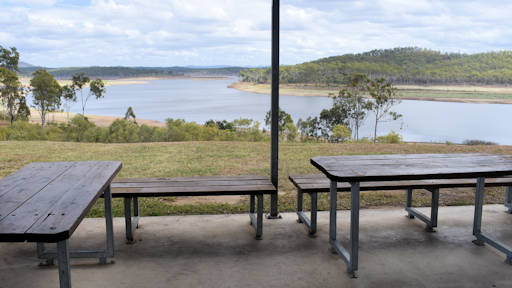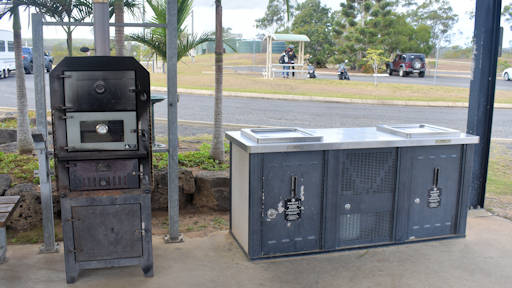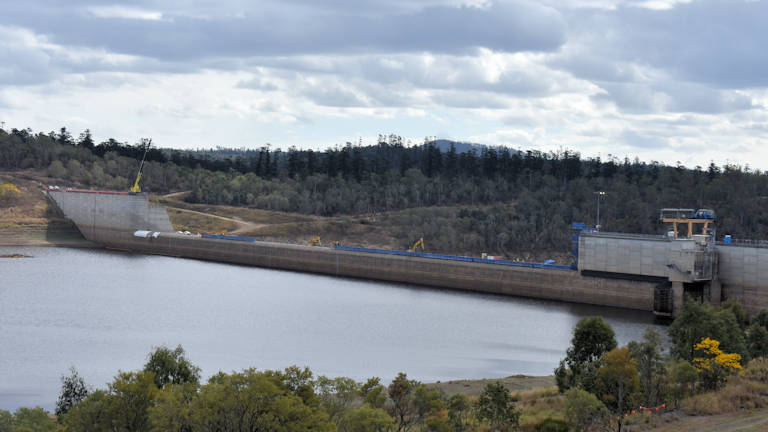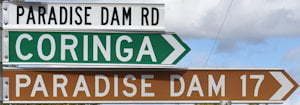Paradise Dam is on the Burnett River built in 2005 and named from the abandoned ghost town of Paradise the water now covers.
The dam has a 300,000 megalitre capacity with a stepped spillway chute.
There is a picnic shelter with tables and free BBQs for use next to the kiosk where the basics can be purchased as well as some takeaway food. There is also a smaller shelter for a BBQ and a picnic table in the parking area.


The picnic shelter looks over the dam and has information about Paradise Dam and the history of the ghost town Paradise that was covered by the dam water.
Camping facilities are at Paradise Dam with unpowered sites, operated privately through the kiosk. Toilets and rubbish bins are available for use.

The dam wall was in the process of being lowered when we visited, a result of mismanagement of the construction of the dam. The dam was reduced by 42% of the originally designed capacity. The structural and stability issues meant the wall could fail and floodwaters could undermine the dam.
History of Paradise
Gold was discovered by two brothers, James and Thomas Allen in the late 1880s.
The town of Paradise was formed in the 1890s with a rush of 700 people arriving with the hopes of making their fortunes in gold. It established itself with a grocery store, butcher, multiple hotels, the Paradise School of Arts Hall, blacksmith and even a Courthouse.
The supply of gold was not as plentiful as was hoped for and it took only 15 years before it was abandoned in the early 1900s, becoming grazing pasture.
The Paradise Provisional School shows how the population changed dramatically, as children left the school either unable to pay the one shilling per week to attend or their families left looking for work elsewhere.
The school first started in 1892 with 111 students from 37 families. In 1896, these numbers started to decline with only 86 students from 26 families. By 1904 when the school finally closed, unable to afford to remain open, there were only 11 students from 6 families.



